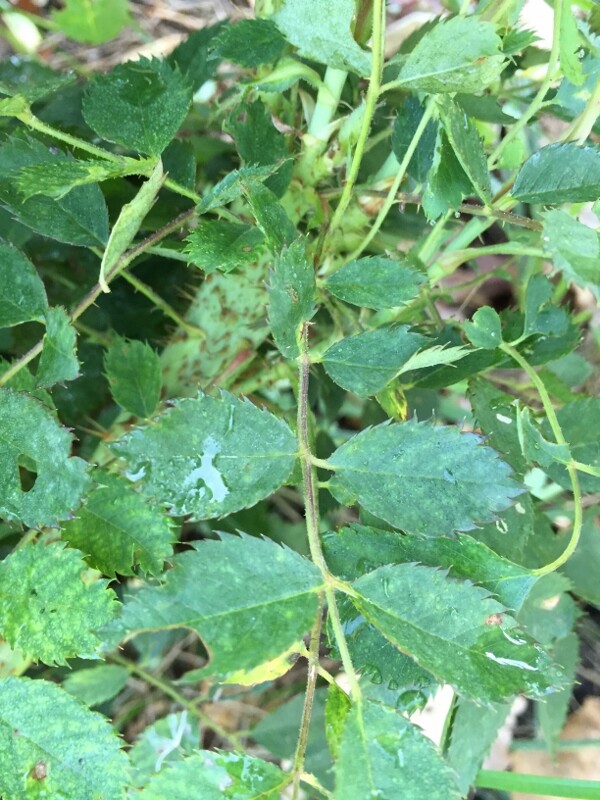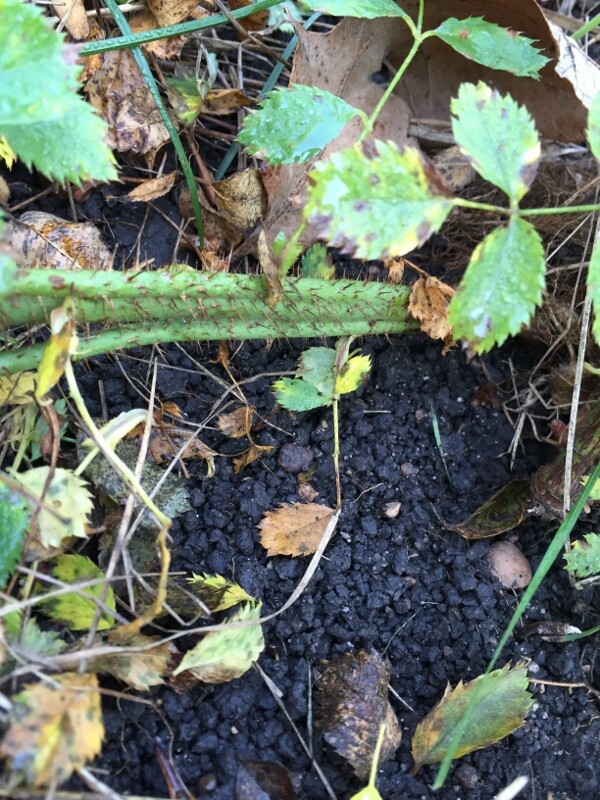Here are photos of two of my second year seedlings with abnormal growth. Could this be RRD? If so, this would the first I’ve seen it or heard of it in Minnesota.



Looks like Roundup damage to me.
Peter
Thanks Peter,
I hope that’s the cause, I sure would hate for RRD to show up here in my garden. I used some Round-up close to these roses on a shrub I wanted to kill. I set the Round-up applicator to spray foam so it wouldn’t drift in the wind, but it must have gotten on these roses anyway or the round up spread to them via the roots.
I agree with Peter. Roundup seems to wash into the soil were shallow roots can absorb it and lead to this type of damage.
I’ve had this same problem this year where I sprayed roundup. What is happening here?
Can this be exploited for betterment in the doubling of chromosomes in diploid roses?
It would be cheaper and more accessible to everyone.
Chuckp
Do we know if accidental treatment with Roundup changes the chromosome count in the new growth?
Rob and Chuck,
I am not enough of a scientist but Round up (glysophate) works by disrupting or inhibiting the biosynthesis of essential amino acids that are nesessary for protein formation in the treated plants. Soil bacterias also are affected, thus disrupting the general health of the soil. The shikamate pathway is probably not an effective way to try to change ploidy. What is happening to the rose is it cannot produce essential aminos, ie, tyrosine, tryptophan, and phenylalanine. Your plant is nutritionally deficient, but there is no way for it to make these nutrients. It is a little more complex than this, but this is my simplified understanding.
Thank you Jackie
Correct on Round-up. Treflan, or generically trifluralin, is a herbicide that works by interfering with cell division, not amino acid synthesis. By blocking cell division, it sometimes allows the chromosomes to double in number yet remain in the parent cell. Then, if the dose isn’t too high, the cell recovers and grows again with another doubling of chromosomes followed by cell division. This takes the lucky cell from diploid to tetraploid which is usually what we want. If the dose it too high, it could wait another cycle and end up octoploid. Probably the cell would die. Many cells get generally messed up and if so the plant dies, a slow death. If the lucky cell is in the apical meristem at the time the treflan hits, all its offspring will have the double chromosome number. If it is somewhere else and survives, it will produce a doubled sector, or shoot or something. So it takes quite a while to know if you have actually succeeded in getting a whole shoot that is doubled.
Colchicine works essentially the same way but is perhaps more hazardous to animals, though it used to be used as a treatment for gout. Treflan is supposed to be less likely to be absorbed into humans or to react with their microtubules. Hence it is allowed as a herbicide. I’d keep it off my skin, as a general precaution. Earlier the details of trifluralin or oryzalin (which works in like manner) were given by one or more people.
Well said Larry, I use a concentration of 0.014% Trifluralin in my works, it is applied to the growth tips of seedling when only the cotyledons leaves are present. My reason for this is, as true leaves are being formed the future buds between each leaf node is also formed. These hidden buds would probably not receive the treatment and therefore conversion not occur. The treated apical bud under magnification will recede down into a hollow, and will stay at this stage for well over a month. The first leaves to appear will be severely distorted, eventually being replaced by normal looking leaves. A read a couple of articles about this years ago and they said this technique was only possible on diploid and triploid roses, maybe as the ploidy becomes bigger the amount of chemical to stop the microtubules pulling the doubled chromosomes to the poles is too high of a concentration, therefore cell death occurs
Warren
Warren, I think the likely reason it doesn’t work well with tetraploids is that they already have been doubled at some point in their history. If you double again, the chromosomes just can’t keep straight who goes with who. Like a couples dance with four sets of identical twins, replaced by identical quads. Unless you really know the steps, you’ll be lost before you reach the end of the jig.
If you had haploids you could make a doubled haploid with Treflan. That’s not common in roses, but some species are routinely grown from gametes, then doubled.